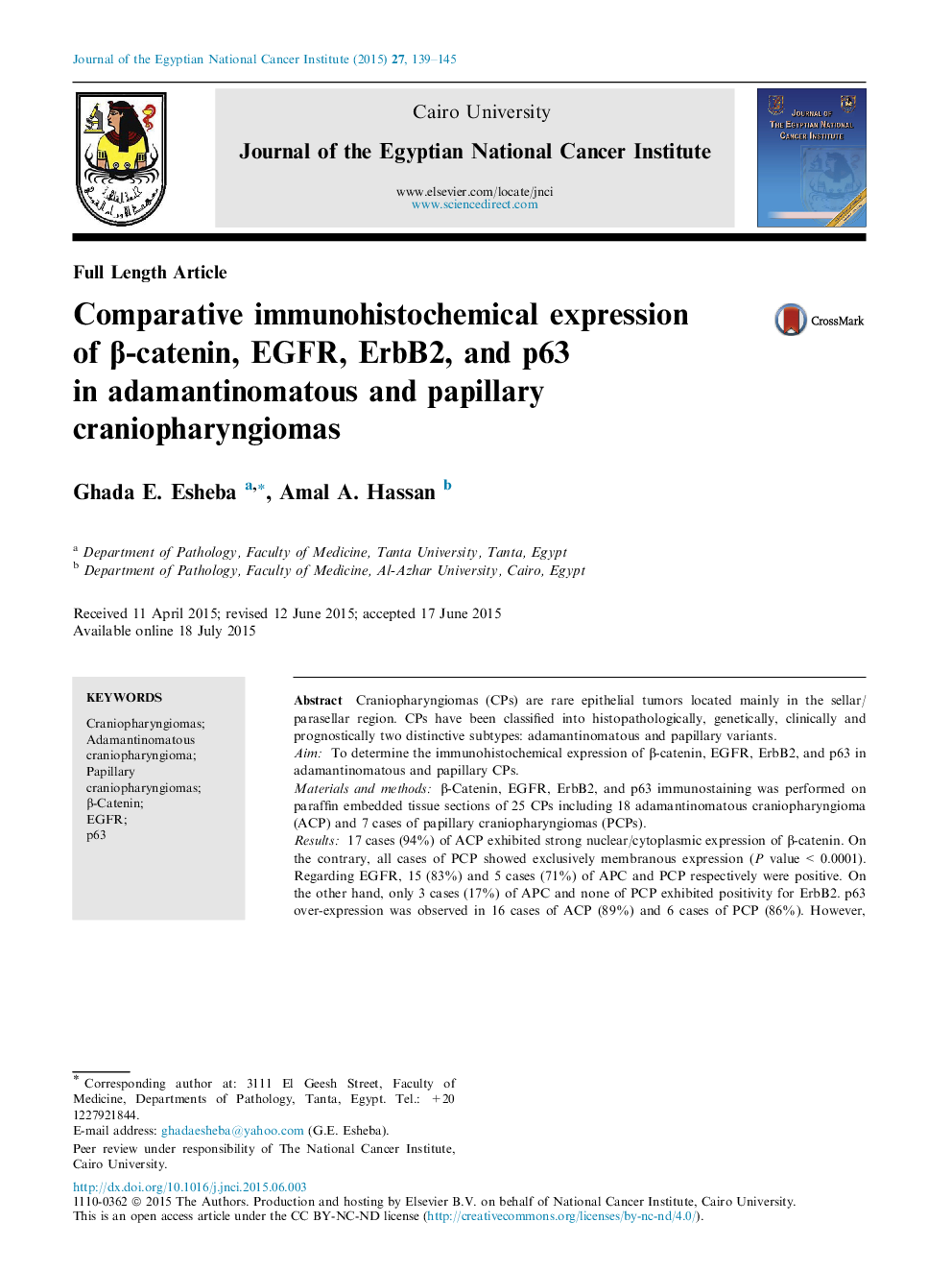| Article ID | Journal | Published Year | Pages | File Type |
|---|---|---|---|---|
| 3988960 | Journal of the Egyptian National Cancer Institute | 2015 | 7 Pages |
Craniopharyngiomas (CPs) are rare epithelial tumors located mainly in the sellar/parasellar region. CPs have been classified into histopathologically, genetically, clinically and prognostically two distinctive subtypes: adamantinomatous and papillary variants.AimTo determine the immunohistochemical expression of β-catenin, EGFR, ErbB2, and p63 in adamantinomatous and papillary CPs.Materials and methodsβ-Catenin, EGFR, ErbB2, and p63 immunostaining was performed on paraffin embedded tissue sections of 25 CPs including 18 adamantinomatous craniopharyngioma (ACP) and 7 cases of papillary craniopharyngiomas (PCPs).Results17 cases (94%) of ACP exhibited strong nuclear/cytoplasmic expression of β-catenin. On the contrary, all cases of PCP showed exclusively membranous expression (P value < 0.0001). Regarding EGFR, 15 (83%) and 5 cases (71%) of APC and PCP respectively were positive. On the other hand, only 3 cases (17%) of APC and none of PCP exhibited positivity for ErbB2. p63 over-expression was observed in 16 cases of ACP (89%) and 6 cases of PCP (86%). However, the distribution of p63 staining was diffuse in ACP, while in PCP; the staining was mainly restricted to the basal cell layer.ConclusionNuclear accumulation of β-catenin is a diagnostic hallmark of the ACP and is very helpful in the differential diagnosis between both ACP and PCP in the setting of small biopsies. Moreover, the restricted nuclear β-catenin accumulation in the cohesive cell clusters within the whorl-like areas supports that aberrant β-catenin expression may play a role in the morphogenesis of ACP.
